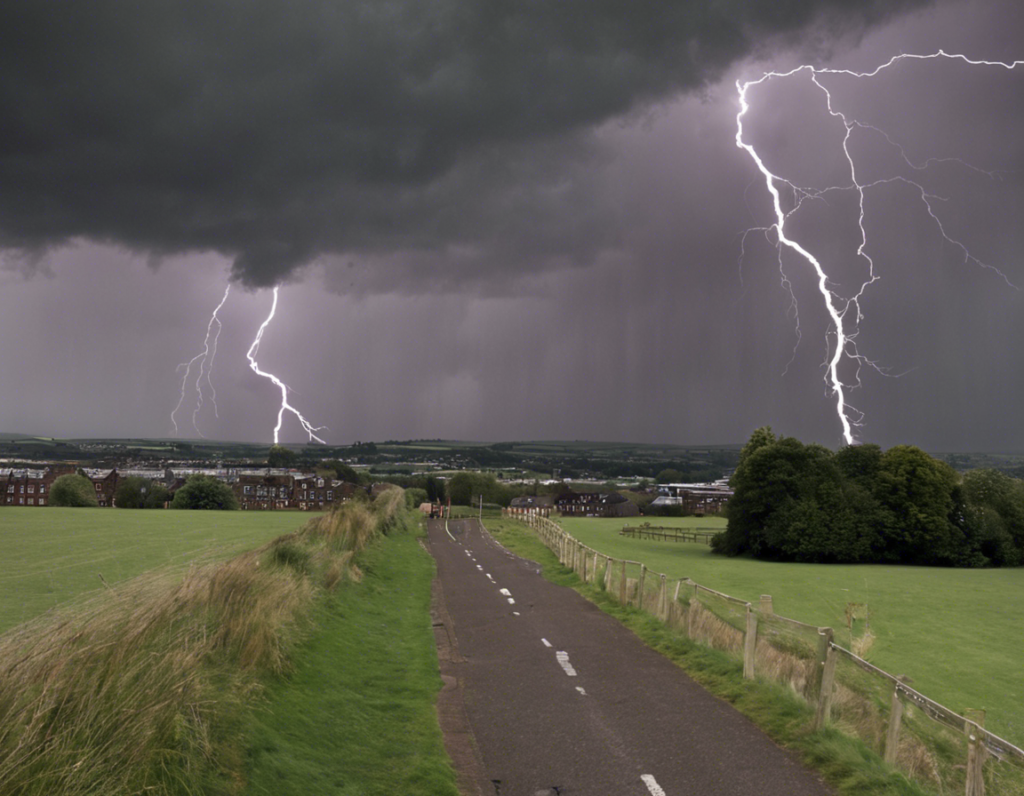Introduction
The UK has been experiencing a series of thunderstorm warnings issued by the Met Office, the national weather service in the United Kingdom. These warnings signal potentially severe weather conditions that can have significant impacts on the populace, infrastructure, and various industries across the country. Thunderstorms are a common occurrence in the UK, particularly during the summer months when warm, moist air from the Atlantic clashes with cooler air masses over the land. In this article, we will delve into the recent thunderstorm warnings in the UK, their implications, safety tips for individuals and businesses, and the role of the Met Office in monitoring and predicting such weather events.
Understanding Thunderstorms
A thunderstorm is a weather phenomenon characterized by the presence of lightning and thunder, often accompanied by heavy rain, strong winds, and sometimes hail. These intense convective storms are fueled by rising warm air, which cools and condenses to form cumulonimbus clouds. When these clouds grow tall enough, they can produce thunder and lightning, as well as heavy precipitation. Thunderstorms can occur year-round but are more frequent in the summer due to the unstable atmospheric conditions.
Met Office Thunderstorm Warnings
The Met Office issues thunderstorm warnings to alert the public and authorities about the potential risks associated with these severe weather events. These warnings are color-coded based on the expected impact of the thunderstorms:
- Yellow Warning: This indicates that severe weather is possible and could affect people in the warned area. It is important to stay updated on the latest forecasts and be prepared for disruptions.
- Amber Warning: This means that there is an increased likelihood of severe weather that could potentially disrupt daily activities and pose risks to life and property. People are advised to take precautions and follow advice from authorities.
- Red Warning: This is the most severe warning level and suggests that extreme weather conditions are expected, posing a danger to life. Immediate action is required to ensure safety and mitigate risks.
Impacts of Thunderstorms
Thunderstorms can have a range of impacts on different aspects of society and the environment. Some of the key impacts of thunderstorms include:
- Flooding: Heavy rainfall from thunderstorms can lead to flash floods, causing damage to homes, roads, and infrastructure.
- Lightning Strikes: Lightning during thunderstorms can pose a risk to individuals, buildings, and electrical systems, leading to fires and injuries.
- Strong Winds: Gusts of wind accompanying thunderstorms can cause damage to trees, buildings, and power lines, resulting in power outages and disruptions.
- Hail: Large hailstones can be produced in severe thunderstorms, damaging crops, vehicles, and property.
Safety Tips for Thunderstorms
During a thunderstorm, it is essential to take precautions to ensure personal safety and reduce the risk of damage to property. Some safety tips to consider include:
- Stay Indoors: Seek shelter in a sturdy building during a thunderstorm to avoid exposure to lightning and strong winds.
- Avoid Water: Do not go swimming, boating, or stand in flooded areas during a thunderstorm as water conducts electricity.
- Stay Away from Windows: Avoid standing near windows, glass doors, or skylights as they can shatter during severe weather.
- Unplug Electronics: To prevent damage from power surges, unplug electronic devices and appliances during a thunderstorm.
- Emergency Kit: Have an emergency kit with essential supplies such as water, food, a flashlight, and a first aid kit in case of power outages or disruptions.
Met Office Forecasting and Monitoring
The Met Office utilizes advanced weather forecasting models, satellite imagery, radar data, and ground observations to monitor and predict thunderstorms and other severe weather events. By analyzing atmospheric conditions and patterns, meteorologists can issue timely warnings to help communities prepare and respond to potential hazards. Public awareness campaigns, media updates, and online platforms play a crucial role in disseminating weather information to the public and enabling them to make informed decisions during adverse weather conditions.
FAQs
- How accurate are Met Office thunderstorm warnings?
-
The Met Office uses state-of-the-art forecasting technologies to issue warnings with a high degree of accuracy. However, weather can be unpredictable, and conditions may change rapidly, so it is essential to stay updated on the latest alerts.
-
What should I do if caught outside during a thunderstorm?
-
If you are outdoors during a thunderstorm, seek shelter in a sturdy building or vehicle immediately. Avoid standing under tall trees, near water bodies, or in open fields.
-
Can thunderstorms lead to flight disruptions at airports?
-
Thunderstorms can affect air travel by causing delays, diversions, or cancellations due to safety concerns. Airlines closely monitor weather conditions and may adjust schedules accordingly.
-
How can businesses prepare for thunderstorms and minimize disruptions?
-
Businesses should have emergency response plans in place, secure outdoor equipment, backup critical data, and communicate safety measures to employees to ensure business continuity during thunderstorms.
-
Are there specific precautions for pet safety during thunderstorms?
- Pets can be scared of thunderstorms, so it is essential to create a safe space indoors, keep them away from windows, and provide comfort during stormy weather. Consult a veterinarian for advice on pet anxiety management.
In conclusion, thunderstorm warnings issued by the Met Office serve as vital alerts for the public to prepare for and respond to severe weather events in the UK. Understanding the impacts of thunderstorms, following safety tips, and staying informed through official channels are key steps in enhancing resilience and reducing risks associated with these natural phenomena. By fostering a culture of preparedness and proactive response, individuals and communities can mitigate the potential dangers posed by thunderstorms and safeguard lives and property.
